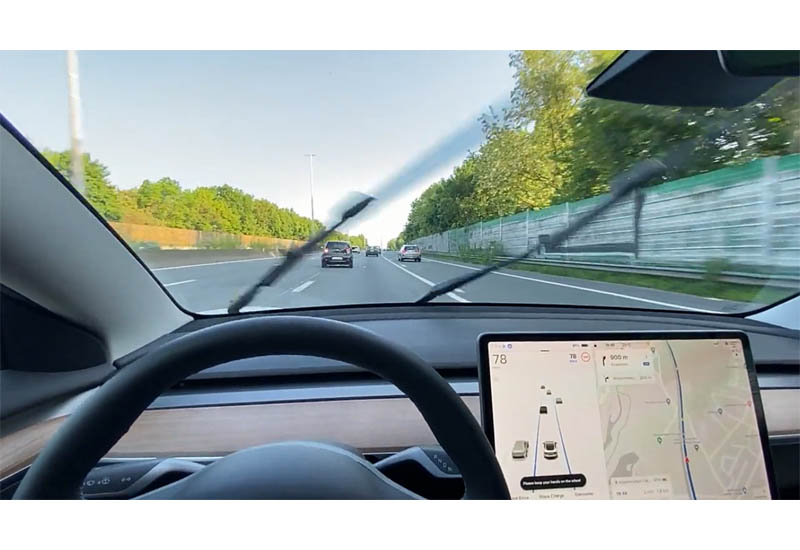Tesla’s Model 3 and Model Y have been praised for their many automation features, but the automatic wiper function has not lived up to expectations. In early 2018, Tesla introduced automatic wipers for vehicles equipped with Autopilot 2 hardware, but the feature has remained imperfect, with many complaints about Tesla’s automatic wipers still appearing on social media platforms.
The Harsh Reality
The Tesla owner’s harsh comments are understandable, as the video shows the vehicle starting the automatic wiper function on a sunny day, and the user subsequently asked Musk if he could at least allow owners to disable the automatic wiper function when Autopilot or FSD is enabled.
Elon Musk responded to the request and apologized for the poor performance of the feature. Musk explained that automatic wipers were one of the last neural networks to be upgraded to surround video (from single-camera, single-frame), so improvements to the feature should be seen in future updates.
A Highly Informative Case Study
GearMusk’s discussion of Tesla’s unsuccessful computer vision-based automatic wiper system to date is a highly informative case.
In July 2017, Tesla’s Model 3 was produced without a traditional rain sensor, and subsequently, the Model S/X/Y also gradually removed this feature. Tesla attempted to use assistive driving cameras to recognize rainfall and automatically control the wipers to the corresponding setting.
This alternative has its rationale: in Tesla’s FSD Beta Demo video released in October 2016, a deep neural network was used to detect whether it was raining.
So when Autopilot is enabled, the vehicle has two completely independent perception-decision systems to determine rainfall, one is the traditional rain sensor, and the other is Autopilot.
In November 2019, Tesla released the first version of its vision-based automatic wiper deep neural network, Deep Rain v1. In fact, the Autopilot team was confident at the time.
Tesla used one million images to train the deep neural network, with a focus on improving the sensitivity of automatic wipers in light rain conditions. In addition, Tesla introduced the concept of human feedback into Deep Rain v1, with every manual adjustment of the wipers serving as a trigger signal, uploading the current image to the cloud for subsequent deep neural network training to make it better.
However, the actual situation was disastrous because, like AEB, users’ demands for such functions were not only that they should be triggered when they should be triggered, but also that they should never be triggered when they should not be triggered. Except for safety-related issues, phantom wipers were no easier to solve than phantom brakes.
In May 2021, Tesla released Deep Rain v3. This was a major update that introduced simultaneous detection of rainfall by all eight cameras in the vehicle. At the same time, Tesla introduced more environmental references, such as whether the vehicle is on ice, in fog, backlit, on a wet road, water mist from the front tire of the vehicle ahead, tunnels, parking lots, etc., to better reduce the problem of false triggers for automatic wipers.
In fact, the automatic wipers driven by Deep Rain v3 already provide a better experience than traditional rain sensors in some scenarios, but false triggers and false judgments still occur.
So Deep Rain v4 will judge rainfall based on video streams, this is essentially what Tesla has been doing with its perception neural networks for the past 18 months with FSD Beta. Tesla’s approach is still very just in this era, which is to use computing to transform all of the vehicle’s products, features, and interactions, and due to OTA and other factors, it will always be superior to traditional rain sensors and far ahead, such as Autopilot.
Although the approach is just, Tesla took too long to deliver the product. Here, there is subjectively Tesla’s underestimation of the difficulty of using computing and deep learning (corresponding to teams, funding, and timelines), and objectively, using computing to subvert most tested and proven car-grade products, features, and interactions is not an easy task.
What’s Next?
Many Tesla owners have asked Musk to simply allow the option to disable auto wipers, but the company appears determined to solve the problem. Deep Rain version 4 is on the horizon, using video streams from all cameras to better contextualize the road environment. Will Tesla eventually reach human-level aptitude for such a seemingly basic task? They’re not there yet, but as long as the over-the-air updates keep flowing, the future looks bright. For now though, Tesla’s wiper woes remain an illuminating example of why advanced AI is harder than it looks!
Related Posts:
Tesla’s Latest FSD Beta v11.4.2 Update: Improved Camera Lateral Perception and Bug Fixes
Tesla’s Latest Model Y Vehicles Come Equipped with HW4 Self-Driving Hardware
